The best MPVs and people carriers – driven and tested
The best way to haul people and cargo is still with an MPV. These are the best ones currently on sale

News
by Jack Warrick
8 mins read
28 April 2025
Share
Multi-purpose vehicles (MPVs) are among the most versatile forms of transport you can find, majoring on space, practicality and people-carrying.
One of their biggest selling points is their extremely efficient use of space, which means they’re often better value than vehicles with a similar footprint.
But don’t think MPVs are lacking in other areas: they’re packed with clever and handy features that reduce the stress of transporting families, often to better effect than some of the best SUVs.
Related articles
- The best seven-seat cars: driven and ranked
- New-look 2025 Dacia Jogger set for hybrid power boost
- Dacia Jogger review
- Autocar Awards 2023: spacious Dacia Jogger wins Best Family Car
- Dacia reshuffles production planning for new Bigster SUV
Generally speaking, MPVs feature up to seven seats, but the sector also includes five-seat models. Some even go up to nine seats.
With SUVs continuing to surge ahead in the sales charts, though, the number of MPVs on sale in the UK has dropped. We’ve lost the Ford S-Max, Ford Galaxy and Volkswagen Sharan in the past few years, for example. But the MPV hasn’t slipped into obscurity just yet.
Our top MPV pick is the Dacia Jogger, which offers by far the best value for money and supreme practicality. But which other models should you consider buying? Read on to find out about the top 10 MPVs and people carriers…
1. Dacia Jogger
9
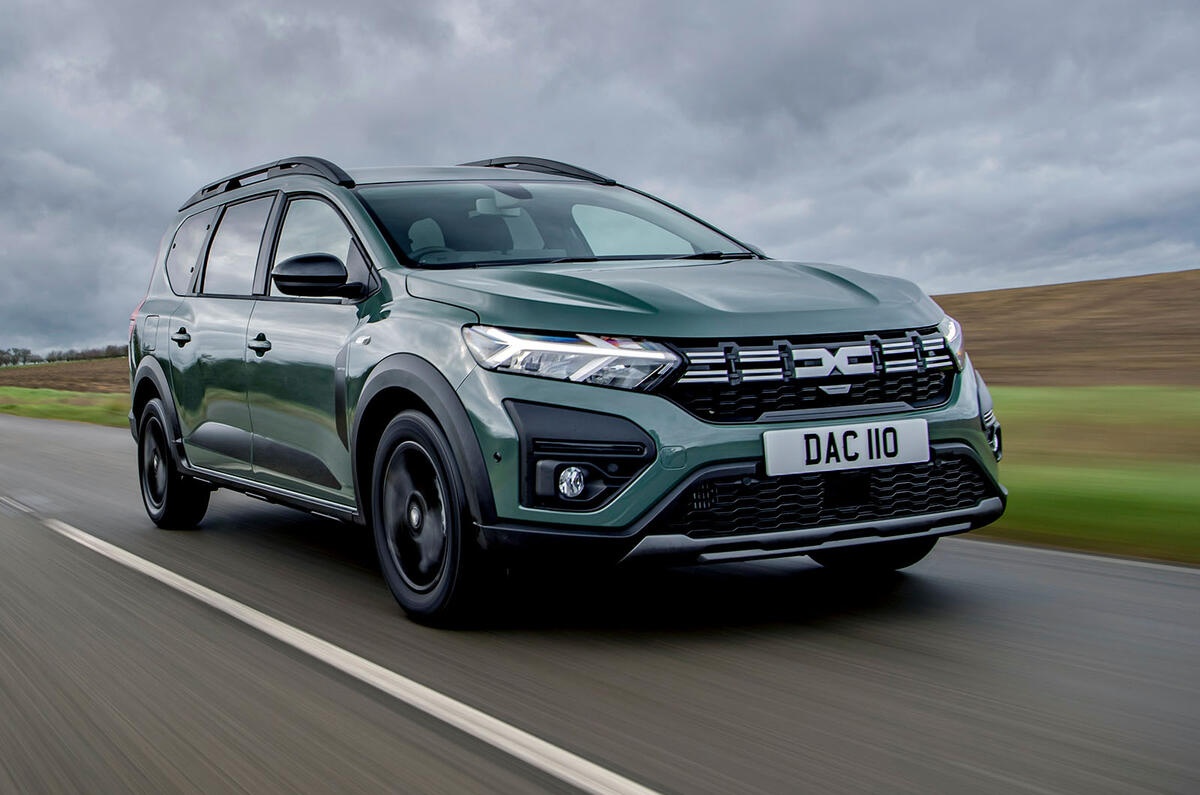
- Design8
- Interior8
- Performance7
- Ride & Handling8
- Costs9
Pros
Outstandingly good value
Versatile and practical for its size
Surprisingly agile at lower speeds
Cons
Powertrain has its rougher, lazier moments
Limited engine range
Interior can feel cheap
Best for: Value for money
Amid a flood of more premium options that have supreme badge appeal, the Dacia Jogger stands at the top of the pile as the best MPV on sale today.
At just over 4.5 metres in length, the Jogger is a little shorter at the kerb than a typical C-segment MPV, but that doesn’t prevent it from offering usable passenger accommodation for up to seven.
The Jogger is a genuine seven-seat family car that you can buy new for less than £15,000. But there’s so much more to this versatile machine than its bargain-basement price.
It offers five decent-sized seats and a couple of more kiddy-sized ones in the boot, but the latter can easily be lifted out entirely when you’ve got big loads to carry.
Dacia’s MPV is arguably all the car your family would ever need. It can be had with hybrid power too if you want to save even more cash on running costs.
Performance, ride and handling are all as capable as you would expect, although you will encounter comical levels of body roll if you push too hard.
Regardless, there hasn’t been a new MPV with the potential to rejuvenate interest in this class for a decade or more, but the Jogger’s value alone could do that.
Read our Dacia Jogger review
Save money with new Dacia Jogger deals from What Car?
Finance this car with Drivenfi
Latest Reviews

Used Porsche Panamera 2016-2023 review
10
Used Porsche Panamera 2016-2023 review

Renault 4

Land Rover Discovery Sport
7

Porsche Panamera Turbo E-Hybrid and Turbo S E-Hybrid
10
Porsche Panamera Turbo E-Hybrid and Turbo S E-Hybrid

Toyota Prius
8
Read our review
Car review

Dacia Jogger
MPV and SUV tropes fuse with a compact seven-seater of likeably humble aspect
Back to top
2. Citroën Berlingo
8
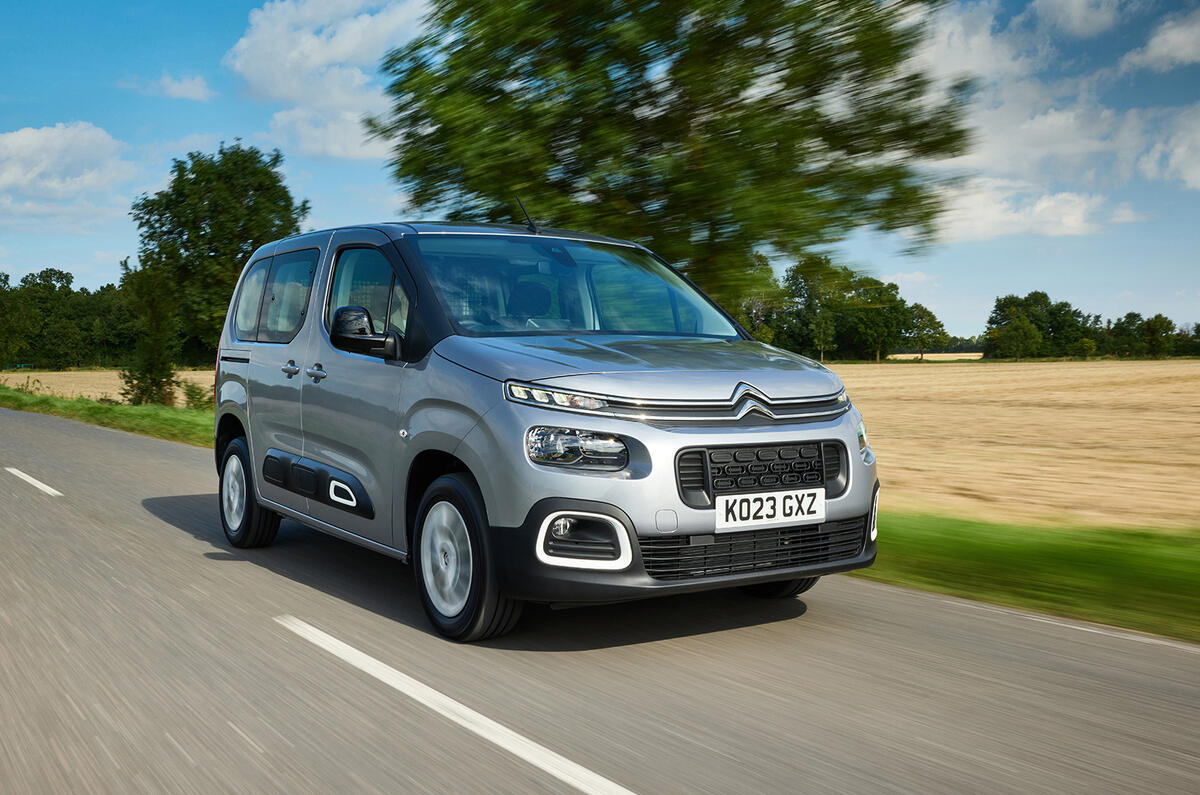
- Design8
- Interior8
- Performance7
- Ride & Handling7
- Costs8
Pros
Massive boot and lots of storage
Comfortable to drive
Sliding doors
Cons
Not as sharp as many large SUVs
Cheap-feeling interior
Short electric range
Best for: Interior space
More than two decades and almost two million sales ago, Citroën pioneered the van-based MPV with the Berlingo, and this latest (third-generation) model returns to the original’s charm and oddball likeability.
A vast interior, which is used intelligently with an array of storage spaces and solutions, sliding rear doors that improve access in tight confines and robust furnishings make this a fine choice.
What’s more, its appeal has recently been enhanced by Citroën’s reversal of its decision to drop petrol and diesel versions.
Both the 1.2-litre petrol and 1.5-diesel have been reinstated, albeit only in the five-seat bodystyle. If you need the seven seats provided by the longer XL version, you’re restricted to the 134bhp electric powertrain with its 50kWh battery, which provides a realistic range of around 110 miles.
Whatever the motive force, there are stout reasons to buy a Berlingo instead of a more conventional MPV. The interior is truly cavernous, with 186 litres of storage space dotted about it. The sliding doors are also a great feature.
Best of all, the Berlingo rides with a languid calmness and steers intuitively, making it a relaxing companion regardless of the quality or type of road.
Read our Citroën Berlingo review
Save money with new Citroën Berlingo deals from What Car?
Finance this car with Drivenfi
3. Volkswagen Multivan
8
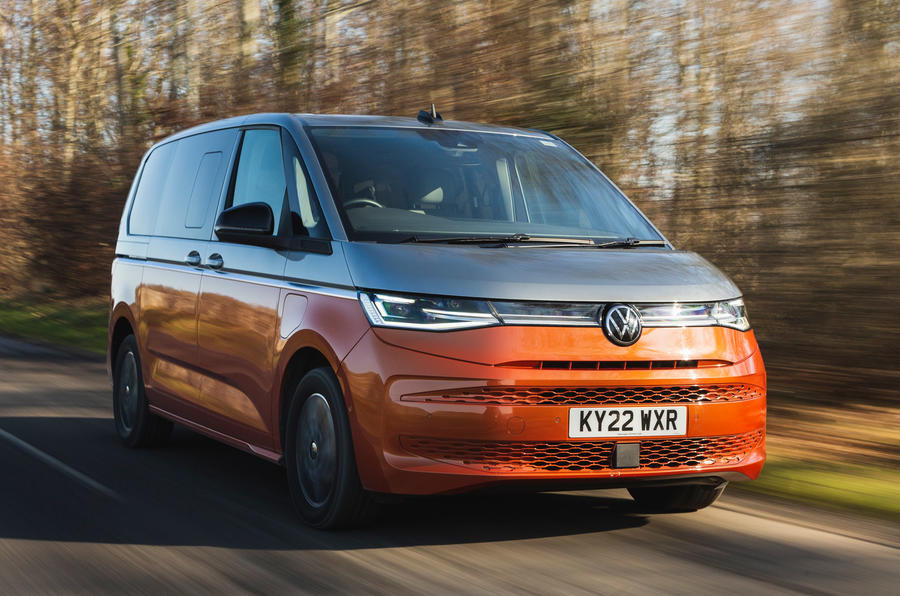
- Design8
- Interior9
- Performance8
- Ride & Handling7
- Costs7
Pros
Versatile interior
Great look and feel inside
Very easy to place, given its size
Cons
Fiddly infotainment system
Some rattles and resonances
Defaults to electric mode on every start
Best for: Interior versatility
Here’s another van-based MPV, but this is a full-sized one that’s perfect for the largest of families.
For vans, it’s usually what’s inside that counts, but the T7’s car-derived platform and electrified powertrain make it surprisingly composed and comfortable on the move.
The Transporter-based Multivan is arguably the most stylish and car-like version to appear in ‘T’ history, which can trace its roots back nearly 80 years.
Underpinned by the brand’s MQB car platform rather than a commercial vehicle platform, the T7 drives with all the assurance, comfort and refinement of a very large Golf. The steering is accurate, body control is good and the ride is pliant.
This is backed up by a punchy engine line-up that runs to a 1.5-litre petrol and 2.0-litre diesel, plus the 2.0-litre TSI petrol from the Golf GTI. There’s also a plug-in hybrid, complete with a claimed EV range of 31 miles, and sliding doors.
Inside, the Multivan is simply vast and offers the sort of flexibility that other MPVs can only dream of. There are seven individual seats (you can have fewer if you wish) and the ones in the back slide, swivel and fold.
Remove the chairs (at 15kg apiece, they ain’t light) and you can run a removal service at the weekend.
The Multivan is a spacious, comfortable and brilliantly sorted people carrier. But with prices starting at just over £40,000 and rising to within an uncomfortable biscuit of £70,000, so it should be.
Read our Volkswagen Multivan review
Save money with new Volkswagen Multivan deals from What Car?
Finance this car with Drivenfi
Back to top
4. Volkswagen ID Buzz
8
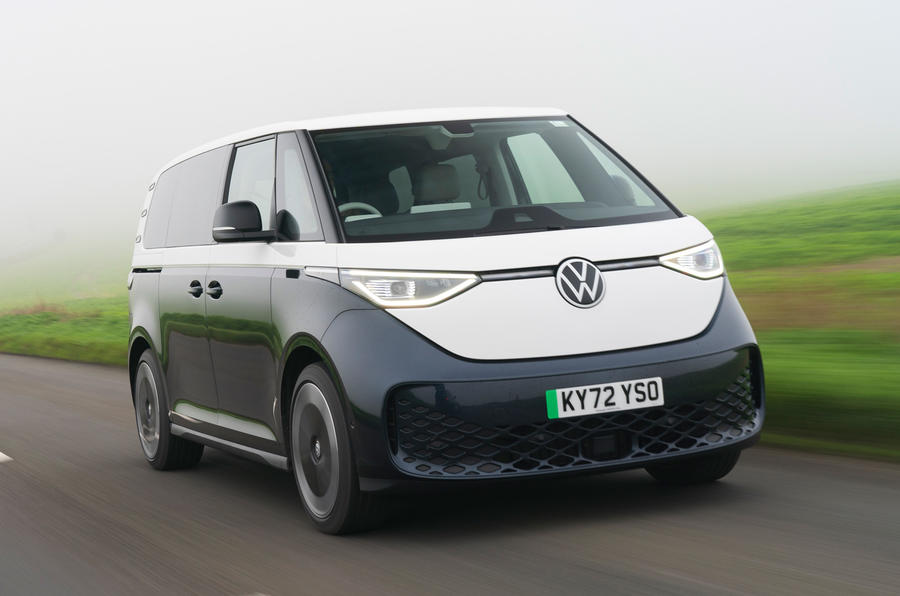
- Design9
- Interior8
- Performance8
- Ride & Handling8
- Costs7
Pros
Comfort and passenger space
Refinement and touring manners
Just enough Type 2 charms
Cons
High price
Lacks clever cabin modularity
It could certainly be smaller
Best for: Character
The Volkswagen ID Buzz was one of the industry’s most hotly anticipated vehicles before it arrived.
The ID Buzz is a surprisingly wieldy, manoeuvrable and composed drive when nipping around urban environments, and it maintains respectable body control out of town.
It sits on the Volkswagen Group’s MEB platform, which means this big bus shares the same underpinnings as the ID 3, ID 4 and ID 5. Similarly to the Multivan, the ID Buzz is more of a car than an actual van.
In fact, the ID Buzz has been available since launch as a five-seat passenger car and as a 2+1 Cargo commercial vehicle variant.
A seven-seat, long-wheelbase version with a larger, 110kWh battery has been available since mid-2024 too, improving its versatility further.
The regular-wheelbase models have a 77kWh battery for an official range of 255 miles – not the highest figure in the world, but a maximum charging speed of 170kW makes top-ups quick.
Entry-level models are driven by a single 201bhp electric motor, but a sporty GTX variant adds a second motor for four-wheel drive and a combined 335bhp.
Whether you’re a devotee of Volkswagen’s traditional camper van or after a conventional people carrier, the ID Buzz offers a likeable package of versatility-first electric family motoring.
Read our Volkswagen ID Buzz review
Save money with new Volkswagen ID Buzz deals from What Car?
Finance this car with Drivenfi
5. Ford Grand Tourneo Connect
8
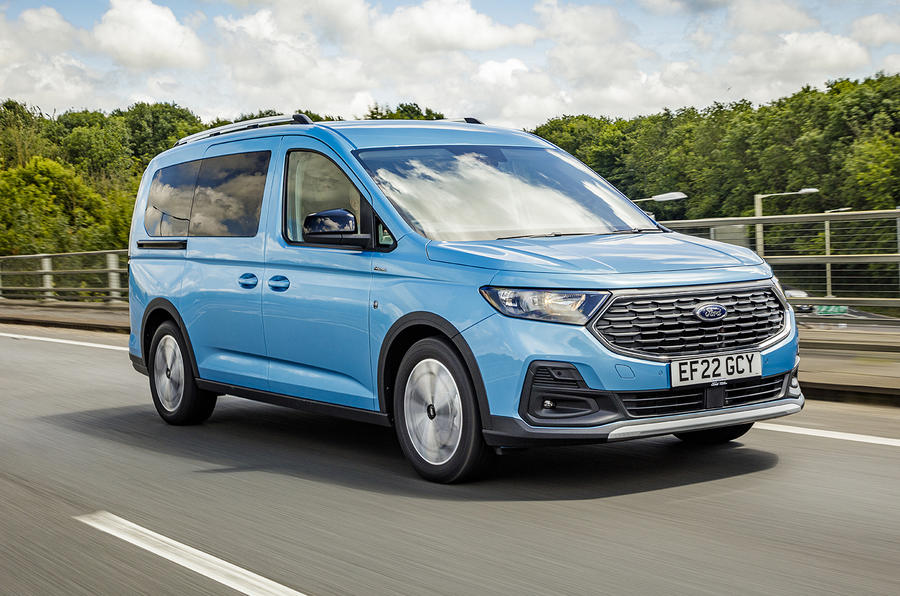
- Design8
- Interior8
- Performance8
- Ride & Handling8
- Costs8
Pros
Airy and spacious interior
Seats can be removed for van-like cargo space
Cheaper than many options on this list
Cons
Poor infotainment
Ride is prone to thumping
Ineffective touchpad climate control
Best for: Handling
The latest Tourneo Custom picks up where its underrated predecessor left off. That car delivered Berlingo-style space and utility with genuine dynamic polish, and the latest version is no different.
The Tourneo is now based on the Volkswagen Group’s much-used MQB car platform, whereas previously it was derived from the ubiquitous Transit van, and it certainly feels more car-like to drive than I had been expecting.
Based on Volkswagen’s MQB platform, the Tourneo Connect has been tuned by Ford’s engineers to give it a poised and plush feel that allows it to scythe through corners as effortlessly as it soaks up bumps.
As before, there’s a choice of two bodystyles: a standard five-seater and a longer (Grand Tourneo) seven-seat option. Both deliver acres of interior space and loads of handy storage, while the sliding rear side doors boost an already versatile package.
Go for the seven-seat version and, with both rear benches removed, there’s a cavernous 3100 litres of carrying capacity.
And if you would rather have a VW badge on the nose, there’s the Caddy.
Read our Ford Grand Tourneo Connect review
Save money with new Ford Tourneo Connect deals from What Car?
Finance this car with Drivenfi
Back to top
6. Volkswagen Touran
8
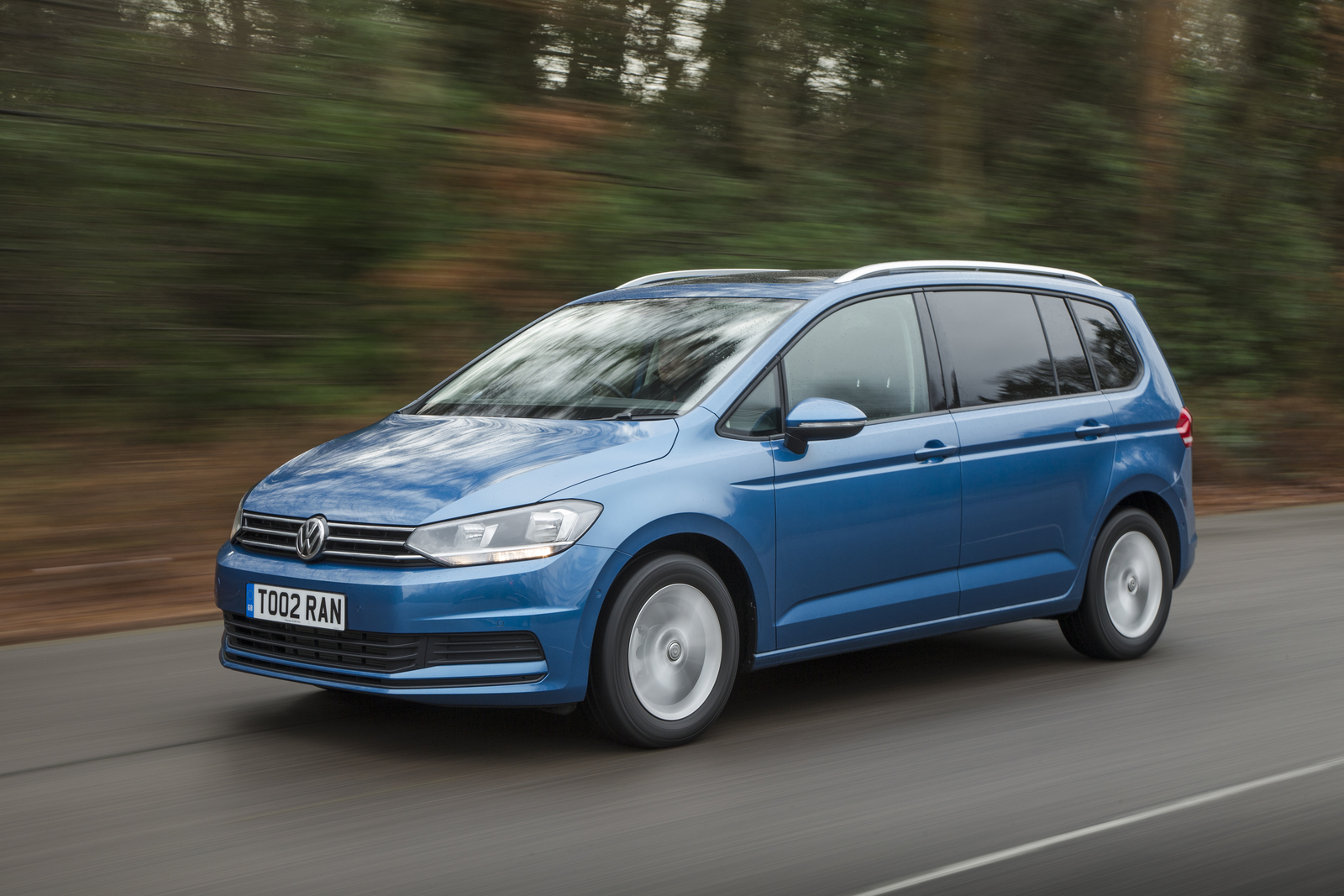
- Design7
- Interior8
- Performance7
- Ride & Handling8
- Costs7
Pros
A good, versatile all-rounder
Great practicality
Singular engine option is a good one
Cons
It’s very old now and lacks character
Engine line-up has shrunk over the years
It’s quite expensive
Best for: Daily driving
The Touran feels like a car formed from the very core of the MPV textbook, having been created to deliver great occupant space inside a fairly compact footprint.
The Touran is a good, if predictable, effort from Volkswagen. It scores highly for its practicality, overall quality, decent chassis and excellent standard-fit safety kit.
It can’t quite match the BMW 2 Series Active Tourer for premium-brand allure or driver appeal and it lacks a bit of charm in its design. But like all great Volkswagens, it’s functional in all respects, offering a versatile and pretty roomy seven-seat cabin without the risk of it dwarfing your three-bed semi.
Volkswagen offers the Touran only with its 1.5-litre TSI Evo petrol engine, which develops 148bhp. It hauls the car along easily enough and with creditable refinement and decent economy.
The handling meanwhile is neat, contained and comfortable.
The Touran scores at least eight out of 10 in every department, making it a strong all-rounder.
Read our Volkswagen Touran review
Save money with new Volkswagen Touran deals from What Car?
Finance this car with Drivenfi
7. BMW 2 Series Active Tourer
8
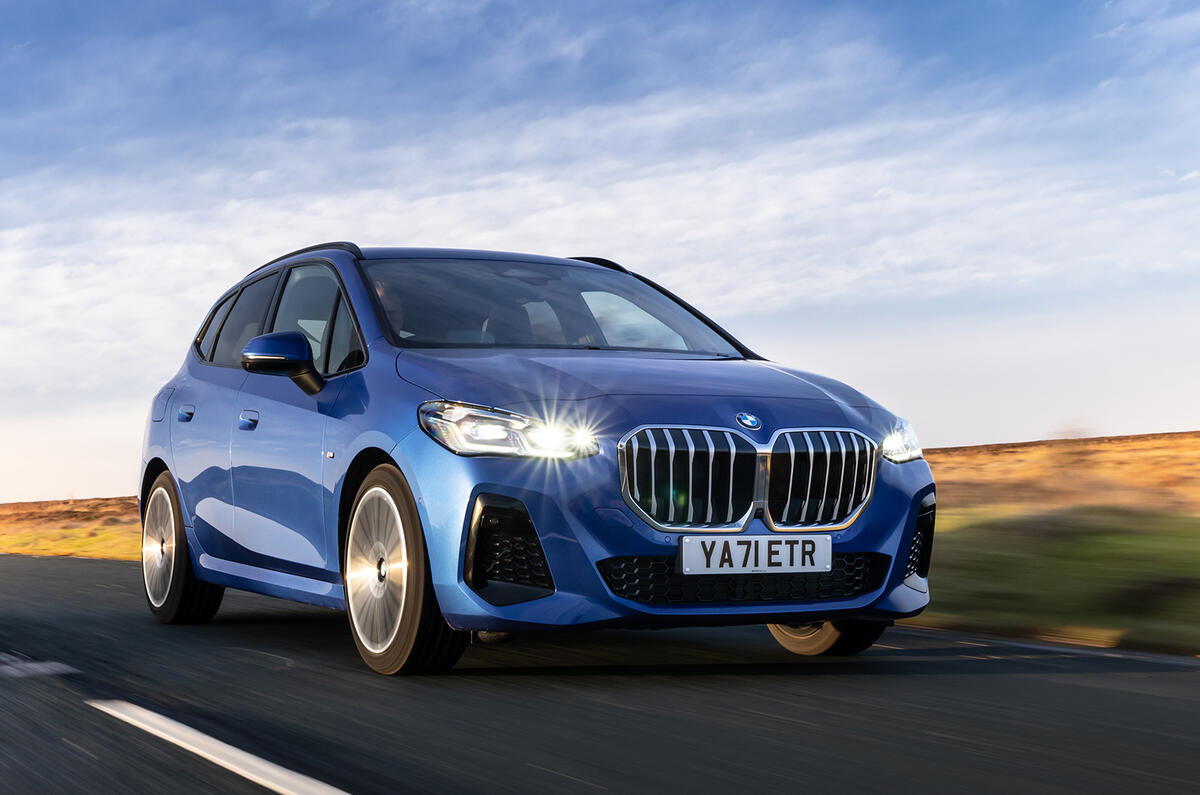
- Design7
- Interior8
- Performance8
- Ride & Handling8
- Costs8
Pros
Excellent build quality
Very spacious
Classy and composed to drive
Cons
No longer offers the option of seven seats
Steeling lacks any sort of feel
Not cheap
Best for: Technology
It’s somewhat surprising that in such a declining sector, premium player BMW has stuck by the MPV.
It’s a more dynamic, better-equipped and versatile choice than its only real remaining rival, the Mercedes-Benz B-Class.
In fact, the latest 2 Series Active Tourer isn’t a facelift of the previous model but an all-new vehicle built on the current 1 Series platform. And the result is a classy and composed hatchback that offers a decent dose of extra practicality.
The old seven-seat Gran Tourer has been dropped, so it’s only this five-seat model that remains. Sitting within a footprint not much larger than a 1 Series, it serves up plenty of space for most growing families, with generous room in the rear, where a sliding bench allows you to choose between extra space for luggage or legs.
As you would expect, the fit and finish is excellent, plus it gets BMW’s latest slick infotainment and advanced driver aids.
It feels like a BMW on the move too, with just enough agility and engagement to satisfy your inner keen driver.
There’s a pair of smooth and responsive 48V mild-hybrid petrols and a diesel, plus the option of four-wheel-drive plug-in hybrids.
The 230e offers a hot-hatch-humbling 322bhp and both PHEVs claim an impressive 56 miles of EV range for an 8% company car tax banding.
Read our BMW 2 Series Active Tourer review
Save money with new BMW 2 Series Active Tourer deals from What Car?
Finance this car with Drivenfi
Back to top
8. Ford Transit Custom
7
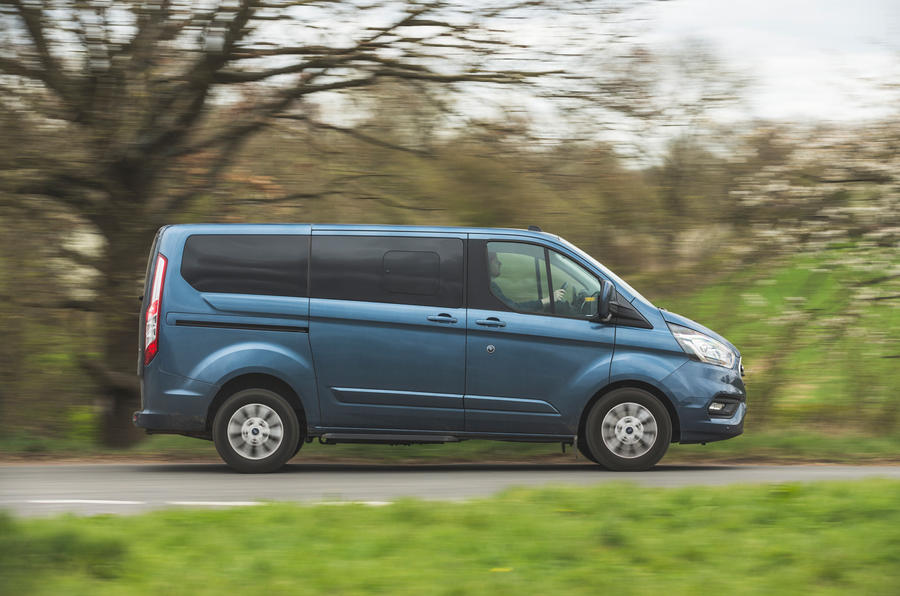
- Design4
- Interior7
- Performance7
- Ride & Handling7
- Costs5
Pros
Up to nine seats
Incredible space
Van and passenger car bodystyles
Cons
Feels a bit too much like a van to drive
Cheap-feeling interior
Poor PHEV range
Best for: Load-lugging
If maximising the amount of space and passenger-carrying capacity is your top priority, you need to be looking at the passenger versions of medium-sized vans.
UK businesses love the Ford Transit Custom, and judging by the vast number of new examples we spotted in the wild during the course of our road test, that’s unlikely to change any time soon.
The best van to drive is the Transit Custom, and the Tourneo Custom is the same but made more habitable for carrying passengers.
One of our photographers ran a Tourneo Custom PHEV for six months and found that the versatility fitted his lifestyle perfectly, and while it was never going to rival a Focus for driver appeal, it never felt like a chore to drive either.
We would recommend a conventional diesel, though, because the pure-electric range of the PHEV is a paltry 30 miles.
Read our Ford Transit Custom review
Save money with new Ford Tourneo Custom deals from What Car?
Finance this car with Drivenfi
9. Mercedes-Benz EQV
7
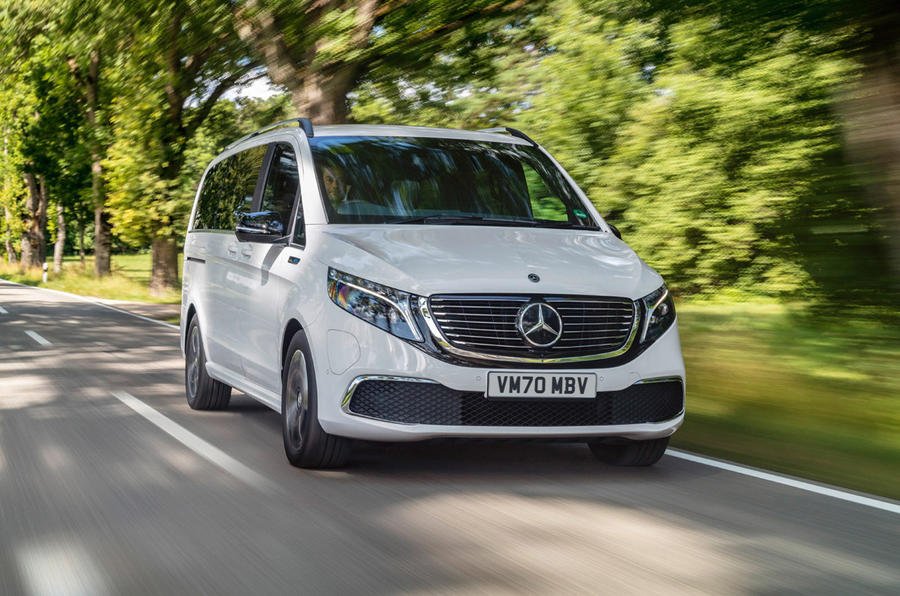
- Design7
- Interior8
- Performance7
- Ride & Handling7
- Costs6
Pros
Extremely quiet and smooth
Nicely weighted and very accurate steering
Looks the part
Cons
Size means it’s a little more sluggish off the mark than most EVs
Bouncy ride on UK roads
Prices start from around £75,000. Yikes
Best for: Style
Mercedes has got the all-electric seven-seater market pretty well served between the EQB and the larger and more expensive EQV.
The MPV is generous in size and tall, so a big battery (90kWh in this case) slips underneath it a treat, with little to no sacrifice in floor height or head room.
Effectively an electric V-Class, this is a big, tall, van-like vehicle with sliding side doors and captain’s chairs in the second row that can spin to face either forwards or backwards.
It’s powered by a 204bhp electric motor and has a usable range of just over 200 miles. And with air suspension and plenty of mass rolling along, it’s quiet and comfortable, and handles well for something so large and heavy.
You would be lucky to pick up an airport transfer in an EQV – and, allowing for the tax advantages, your chauffeur would be pretty happy to run one, assuming they have easy access to a charger.
Read our Mercedes-Benz EQV review
Save money with new Mecedes-Benz EQV deals from What Car?
Finance this car with Drivenfi
Back to top
10. Lexus LM
6
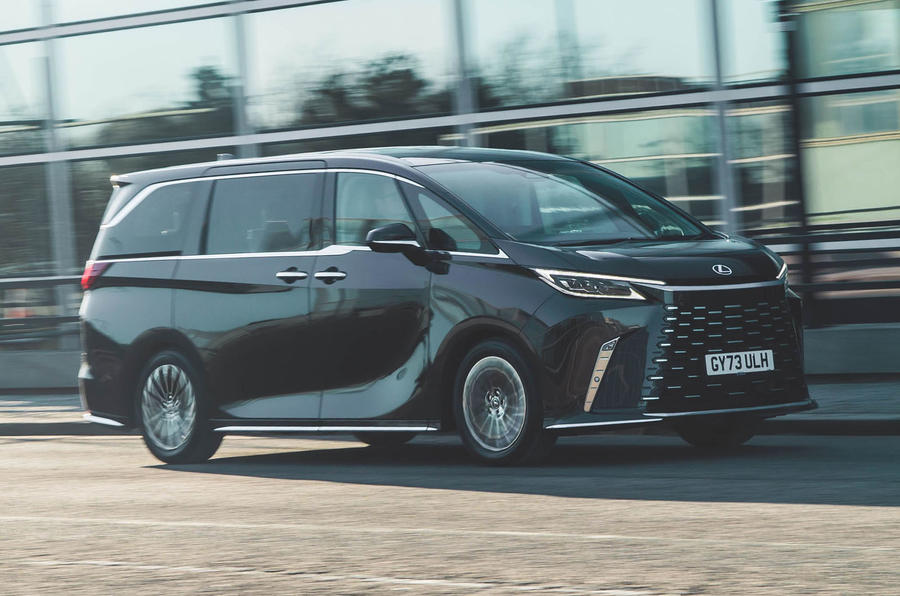
- Design7
- Interior10
- Performance4
- Ride & Handling7
- Costs8
Pros
Genuinely opulent rear-seat space and lounging potential
High-material quality and tactile appeal of cabin
Very luxurious
Cons
Engine can struggle with the LM’s 2.3-tonne kerb weight
Not as comfortable as it should be
Those looks
Best for: Luxury
The Lexus LM is exactly the sort of posh MPV that you would expect to see transporting the wealthy to a black-tie ball in central London.
Plush and expansive in the back and fitted out like nothing else, it would do short-hop luxury transportation exceptionally well.
Starting from £89,995, it’s the most expensive MPV on this list by a considerable margin, but it’s easy to see why once you step inside. The LM’s interior has been designed for old-school luxury, and it certainly feels special.
The rear seats are airline-style recliners with heating and ventilation functions, and there are even seven massage functions, footrests and cushions. You can also lay the seats flat and use them as a sleeping area.
Not enough? You might be interested in the 48in television. Or if that’s a bit old-school for you, you can use the LM’s phone-sized touchscreen to control all media functions and top up your phone’s battery using the wireless phone charger hidden in the armrest. Other hotel room functions include a fridge and shoe storage.
The LM isn’t the best to drive – not anywhere near it. It’s powered by a 2.5-litre four-cylinder petrol engine paired with one or two electric motors.
Both specifications struggle with the weight of the LM, and it often feels slow, unresponsive and generally underpowered. It’s also surprisingly noisy and isn’t quite refined enough.




